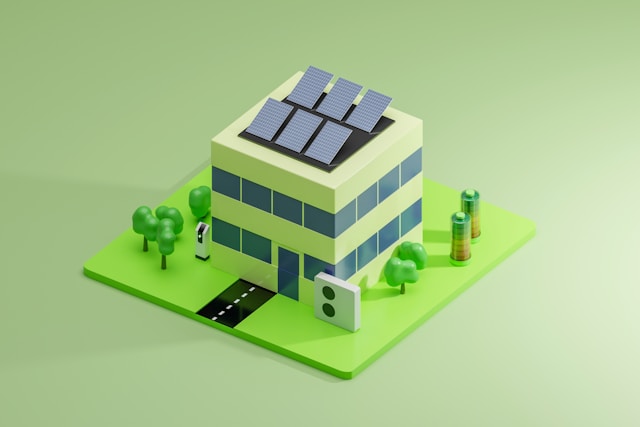
As the world grapples with the consequences of climate change, the transition to green energy solutions has become more critical than ever. With advancements in technology and a growing emphasis on sustainability, the future of green energy appears promising. This article explores the emerging trends, innovations, and challenges associated with green energy solutions, highlighting their potential impact on our planet.
The Shift Towards Renewable Energy
The global shift towards renewable energy sources, such as solar, wind, and hydropower, is essential in reducing greenhouse gas emissions and combating climate change. In recent years, investments in renewable energy technologies have skyrocketed, driven by declining costs and supportive government policies. According to the International Renewable Energy Agency (IRENA), renewable energy capacity has increased significantly, with solar and wind energy leading the charge. This trend is expected to continue, making renewable energy a cornerstone of future energy systems.
Energy Storage Solutions
Energy storage systems, particularly batteries, play a pivotal role in integrating renewable energy into the grid. As renewable sources like solar and wind are intermittent, practical storage solutions allow excess energy to be stored for later use, ensuring a steady supply. The development of lithium-ion batteries has already revolutionized energy storage. Still, researchers are now exploring alternative materials and technologies, such as solid-state batteries and flow batteries, which promise to enhance energy capacity and lifespan.
Smart Grids
Smart grids are another innovative solution that enhances the efficiency of energy distribution. By incorporating advanced communication technologies, smart grids can optimize energy flow, reduce waste, and respond dynamically to changes in demand. These grids allow for better integration of renewable energy sources, ensuring that energy generated from wind and solar is used efficiently and effectively. Additionally, they empower consumers to monitor and manage their energy consumption, promoting energy-saving practices.
Electric Vehicles (EVs)
The rise of electric vehicles (EVs) represents a significant shift in the transportation sector. As governments worldwide implement stricter emissions regulations, the demand for EVs is expected to surge. EVs not only reduce reliance on fossil fuels but also support the growth of renewable energy by providing an additional energy storage option. When plugged into the grid, EVs can help balance supply and demand, further enhancing the resilience of our energy systems.
Global Agreements and Commitments
International agreements, such as the Paris Agreement, set ambitious targets for reducing greenhouse gas emissions and promoting renewable energy. These agreements create a framework for countries to collaborate on green energy initiatives, sharing knowledge and resources to accelerate the transition. As countries commit to achieving net-zero emissions by mid-century, the demand for green energy solutions is expected to rise, driving further investments in the sector.
Private Sector Involvement
The private sector is also increasingly recognizing the importance of sustainability. Corporations are setting ambitious sustainability goals, often committing to 100% renewable energy usage. This trend not only helps mitigate climate change but also presents business opportunities in the green energy market. As businesses invest in renewable energy technologies, the innovation ecosystem will flourish, leading to new solutions and job creation.
Infrastructure Limitations
Many existing energy infrastructures were designed for fossil fuel-based systems, making the integration of renewable energy sources challenging. Upgrading and expanding grid infrastructure is essential to accommodate the increased demand for clean energy. This requires significant investment and planning to ensure that new technologies can be seamlessly integrated into the existing system.
Public Perception and Acceptance
Public perception of green energy solutions can also pose a challenge. While awareness of climate change is growing, some individuals remain skeptical of renewable energy technologies or are resistant to change. Education and outreach efforts are vital to informing communities about the benefits of green energy, addressing misconceptions, and promoting acceptance.
Resource Availability
The availability of raw materials for renewable energy technologies can also be a concern. For instance, the production of solar panels and batteries relies on minerals such as lithium, cobalt, and nickel. As the demand for these materials increases, ensuring sustainable sourcing and responsible mining practices is crucial to avoid negative environmental and social impacts.
The Role of Individuals and Communities
While governments and corporations play significant roles in the transition to green energy, individuals and communities can also make a difference. Small-scale renewable energy installations, such as rooftop solar panels, empower homeowners to take control of their energy usage. Community solar projects provide access to renewable energy for those who may not be able to install solar panels on their properties, democratizing access to clean energy solutions.
Energy Efficiency Measures
Individuals can also contribute by adopting energy-efficient practices. Simple actions, such as using energy-efficient appliances, improving home insulation, and utilizing smart home technologies, can significantly reduce energy consumption. These measures not only lower utility bills but also contribute to the overall reduction of greenhouse gas emissions.
The future of green energy solutions is bright, driven by technological advancements, supportive policies, and growing public awareness. As the world continues to confront the challenges posed by climate change, the transition to renewable energy will be paramount. By embracing innovative technologies, investing in sustainable practices, and fostering collaboration among governments, businesses, and individuals, we can create a cleaner, greener future for generations to come. The journey toward a sustainable energy future may be challenging, but it is essential for the health of our planet and the well-being of humanity.